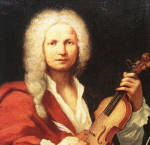





MA: How do you delegate work in colossal endeavors of the order of Castle Tivoli (1990) or Heaven of Delight (2002), your recent ceiling for the Hall of Mirrors of the Royal Palace in Brussels?
JF: Castle Tivoli was a drawing/sculpture and a sculpture/drawing that you could penetrate or walk around—it was a vibrating piece of drawn sculpture. In my work, I have sought to achieve the independence of drawing as a self-sufficient medium. I want to rid drawing of its personal signature. What better to achieve this than by creating a colossal drawing—a large energy field—with 30 assistants in which the hand of the artist becomes irrelevant. Castle Tivoli raises questions as to what exactly is a drawing and what exactly is a sculpture. It was the culmination of that particular period in my career. I was involved with Heaven of Delight for three years, although actual work on the ceiling took three months. This sculpture/drawing comprises 1.4 million jewel beetle shells. My first drawings in blue ballpoint were created by following insects on paper—the splitting of space. Next, I proceeded to replace the ballpoint line by the insect itself. The shimmering ceiling at the Royal Palace is the apotheosis of my development involving the beetles. That is why I am currently conducting research on the body, that strange laboratory we wake up with every morning.
My work is concerned with the release and the absorption of energy, with electricity. I still do a lot myself. I register energy, time, and intensity. I am interested in the act of making. I could have drawn over a photograph of that castle in Mechelen, but instead I chose to cover the entire castle with blue ballpoint. The process of making, or letting others make, gives me tremendous pleasure. I cannot get away from that—I love that physical experience. My nerves cannot be tamed.
As far as the ceiling is concerned, I first created a wide variety of forms and patterns by gluing beetles onto small surfaces. Then I told my 29 assistants that they could start inventing forms, knowing full well what they would come up with. This process allowed me to discover who was good at what type of pattern. Once I had this information, I could assign different areas of the ceiling to different assistants. Those thousands and thousands of beetles form drawings within the larger drawing, as in my large ballpoint drawings. My sculpture seeks to conquer space.
MA: Where do you get thousands and thousands of beetles?
JF: I obtain the scarabs from universities I have connections with and through the open market. The Sternocera acquisignata used in the Royal Palace is a non-protected species that appears abundantly in certain countries. In Thailand, the beetle is fried for consumption and its shell is discarded.
MA: Your work can look extremely delicate. Is it ephemeral?
JF: I use strong materials, which happen to have a fragile appearance. The color of those beetle shells will never fade, for the outer integument contains chitin, one of the strongest and lightest materials on earth, which was used for objects destined for the Mir space station. Scientists are once more studying the world of insects. I love the durability of things. I create for the future. I believe that my work contains many riddles and layers, which will reveal themselves more clearly to the beholder in, say, 50 or 100 years. Only then will my work be better understood.
I find it such a beautiful thought: we live in a society where no one is concerned with durability, while artists are precisely engaged with issues of durability. Durability is a rather old-fashioned concept. You are no longer allowed to believe that your work will have value in, say, 100 years. I believe, on the contrary, that its significance will increase. I would stop making art if I believed that my work could hold no future meaning.Michaël Amy is a frequent contributor to Art in America, tema celeste, Sculpture, and The New York Sun.



















+Gardens+1919.jpg)









